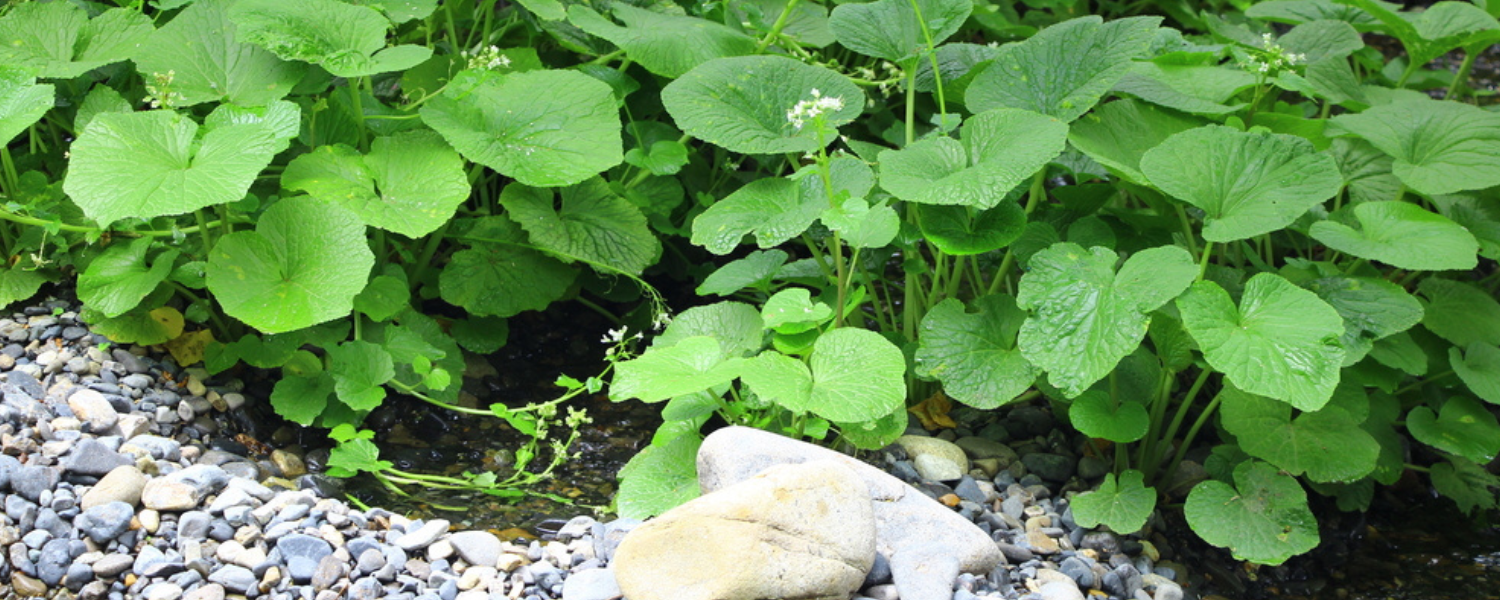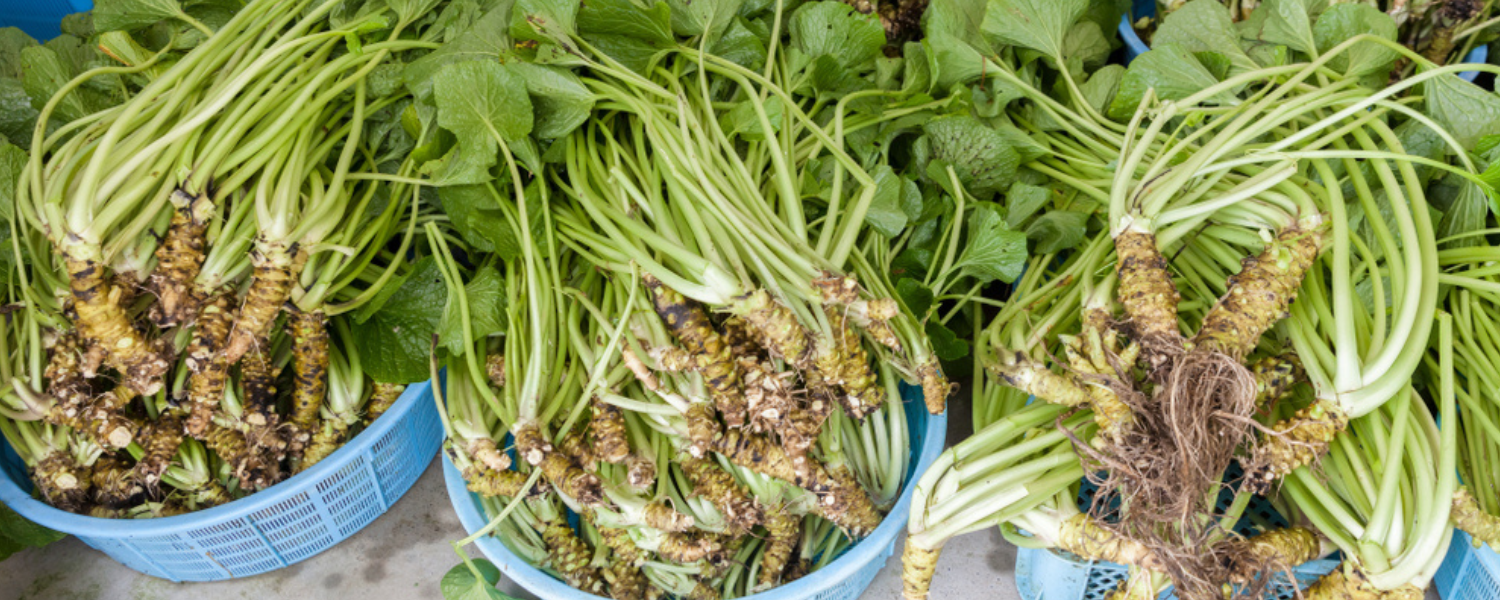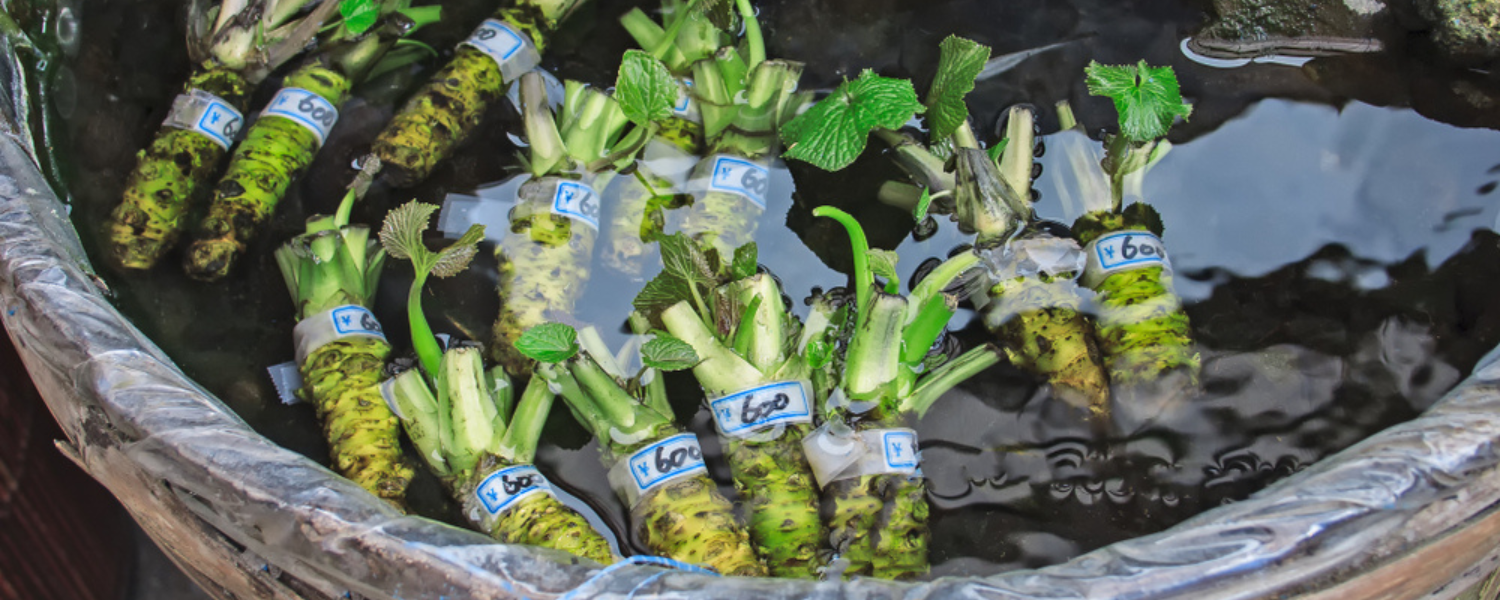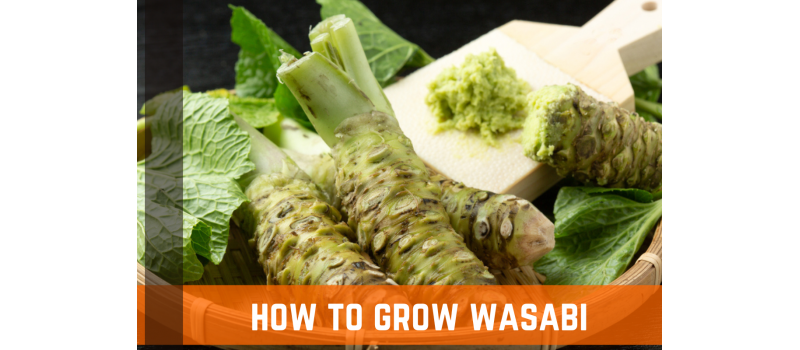Wasabi, also known as Japanese horseradish, is a root vegetable. It is also used to season nuts and other savory snacks. Many people who enjoy spicy flavors enjoy it because of its strong flavor and heat. It has been reported, though, that some of the wasabi used in commercial dishes served in restaurants isn't made entirely of wasabi and is instead mixed with mustard or European horseradish and colored with food coloring.
Wasabia japonica, a member of the brassica family, thrives in cool climates. You'll need to create an environment that is similar to the rocky, moist, well-draining environment this plant originally evolved in, which is found in mountainous Japan along streams.
Shade, slightly sulphurous soil, and very regular watering and weeding are all absolute necessities. Growing wasabi from rhizomes can take several years. While it can be challenging to self-seed, most people find plantlets to start their harvest. Read on to learn all about how to grow wasabi!
Optimal Growing Conditions For Wasabi
Light & Temperature
Make sure the plants are shaded because wasabi does not tolerate direct sunlight well. A folding screen or a piece of fabric can be used to create a shade barrier. You can move container plants around to keep them in the shade.
The fact that wasabi prefers constant temperatures between 45 and 75 degrees Fahrenheit and can tolerate only a small range of temperatures is a crucial factor to take into account when growing wasabi.
Avoiding extreme temperatures below zero and above 80 degrees Fahrenheit can prevent plant death. The Pacific Northwest and other coastal regions offer the suitable cool, temperate climate for growing wasabi. If you plant in containers, you can move the plants if the temperature suddenly rises or falls. Move the plants to shade and give them a light misting if the leaves start to droop or wilt.

Soil
Garden wasabi plants require rich, consistently moist soil that ranges in pH from slightly acidic to neutral. Use a one- or two-gallon pot with a 10-inch planting depth if you're growing in containers. Blend some rich soil and compost; make sure it's a little heavier than potting soil so it can hold moisture.
Water
When planting your wasabi, water it thoroughly. After that, water it frequently. Additionally, misting the plants will keep them cool. Don't overwater these plants because they can't stand standing water. Standing water can lead to root rot, a condition that can kill your wasabi plant.
Nutrients & Fertilizer
Wasabi requires only a little fertilizer. Because they grow slowly, they can't tolerate excess fertilizer. At the time of transplanting, it's preferable to give them a balanced fertilizer, such as a 12-12-12. In order to enhance flavor, many farmers also spray the leaves with a foliar solution about 1-3 months before harvest.
How To Plant & Grow Wasabi
Humidity & Temperature Requirements
Locate a humid, moderately warm environment. Wasabi is a native of Japan and thrives in warm, humid climates between 45 and 70 degrees Fahrenheit. Due to its infamously finicky nature, wasabi cannot grow in environments where the temperature frequently rises or falls outside of this narrow range.
Wasabi naturally grows in damp, forested areas with plenty of atmospheric moisture and soil that drains well. Wasabi can be grown in specific regions of the Pacific Northwest and the Blue Ridge Mountains in the United States. There aren't many other places that can grow the plant naturally.
You will need to manually create the ideal conditions if you reside in an area without the natural climate required for growing wasabi. Using a greenhouse, which traps heat and humidity and lets you regulate the temperature, is one of the best ways to accomplish this. If you choose to use a greenhouse, set the temperature controls so that it is consistently between 45 and 70 degrees Fahrenheit.
Pick A Shaded Growing Location
Wasabi requires a very shady location because it does not grow well in direct sunlight. Wasabi naturally grows under the cover of a forest, where just enough sunlight penetrates the leaves to provide it with what it needs to thrive. Try to recreate this environment in your own garden by placing the wasabi under trees or shading the growing area with a homemade canopy.

Amend The Soil
Compost and organic fertilizer should be combined. To create a rich, healthy soil, till the ground to a depth of 10 inches and incorporate ten inches of compost. pH levels should be checked and adjusted until they are between 6 and 7.
Wasabi thrives best in an environment with this particular pH. To give your wasabi the best chance of surviving in a home environment, you want very rich, organic soil with the ideal pH.
Plant The Seeds
Before planting, soak the seeds for an entire night. It will be easier for the wasabi to germinate if the seed shells are softened by soaking. The seeds should be sown one to two inches apart, lightly pressing them into the ground.
Keep The Soil Moist
Wasabi is a semi-aquatic plant that requires constant moisture to thrive. Every day, mist the ground and the sprouting seedlings with cool, fresh water to simulate the splashes from streams and waterfalls. The wasabi will start to wilt if it is allowed to dry out.
Remove Any Weeds
Clean up the planting area. To give the wasabi roots plenty of room to grow, remove competing plants. Weeds frequently sprout because the soil is consistently kept moist. The issue can be controlled by weeding daily or every other day.

How Long Does It Take Wasabi To Grow?
Seeds are sown in spring and transplanted to moist, shady beds in early summer. Plants typically take 2-3 years to mature enough for harvest. Once wasabi flowers appear, the rhizomes are ready to be dug up and grated into the signature green paste. Because of the time and effort required to grow wasabi, it is often more expensive than other types of mustard.
Harvesting Wasabi
It's crucial to take good care of your wasabi plants because you won't be able to harvest their rhizomes for the majority of them until the second year. Within a year to two years, the plants will be ready to be pulled. Wasabi is actually edible almost throughout its entire life cycle.
However, it is typically harvested when the stalks are about 1 1/2" thick and sticking out of the ground by about 4-5 inches. Simply gently remove the stalk from the ground while avoiding breaking it in two. Eliminate the leaves and any rot at the root's base.
Wasabi will start producing leaves in about eight weeks, so while you wait for the mature stalks, you can savor the leafy bounty of your plants. To keep the plants tidy and healthy, it is a good idea to harvest these leaves.
Allow the plant to grow more leaves after your initial harvest, then harvest them every 6 to 8 weeks. The leaves can be blanched and frozen like any other greens, or you can make a pesto-like sauce for pasta and rice and freeze it if you can't eat them all or give them to friends. Although the stems can be frozen, fresh is preferred. They add crunch and flavor to salads and stir-fry dishes.
How To Store Wasabi
Wasabi is actually a very delicate plant, and it must be stored properly in order to maintain its flavor. The best way to store wasabi is to keep it in a cool, dark place. Wasabi roots are typically sold with the leaves still attached, and these must be kept moist in order for the plant to stay alive.
Once the roots have been cut, they can be stored in a plastic bag or container filled with water. They should be refrigerated and used within a few days. If you are not planning on using them immediately, you can also wrap the roots in damp paper towels and store them in the fridge for up to a week.
When it comes time to use your wasabi, simply grate the root on a microplane or similar grater. And if you find that your wasabi has lost its flavor, don't despair - simply add a little more grated root to your dish! With proper storage, your wasabi will be fresh and flavorful for weeks to come.

Common Wasabi Pests & Diseases
Wasabi belongs to the Brassica family of plants. This family's pests and diseases include aphids, crane fly larva, cabbage and alfalfa looper larva, and slugs. Maintaining the cool temperatures and steady irrigation that wasabi prefers is the best defense against pests and disease.
The plant will benefit from the removal of wilted or diseased foliage, slugs by hand or with slug bait, aphids, and other pests. When using insecticides of any kind, including insecticidal soap, exercise caution.
If a fungal disease is found, it is advised to either completely destroy the plant or remove it from all other plants so that it can be treated. If there are any fungus-related complications, copper spray may be helpful.
Conclusion
Wasabi is a notoriously difficult plant to grow, which is why the vast majority of wasabi on the market is actually horseradish that has been dyed green. If you're up for the challenge, though, it can be a rewarding experience to grow your own wasabi. The plant prefers cool, shady conditions and does not tolerate extremes of heat or cold.
It also requires a lot of humidity, so regular misting is necessary. Wasabi does best in rich, well-drained soil that is kept moist but not waterlogged. Once the plant has established itself, it will produce small white flowers followed by green fruits that are similar in appearance to bell peppers.
If you're lucky enough to have a wasabi plant that bears fruit, the best way to enjoy it is to grate it fresh onto sushi or sashimi. With proper care, your wasabi plants will thrive and provide you with fresh wasabi root for years to come!

